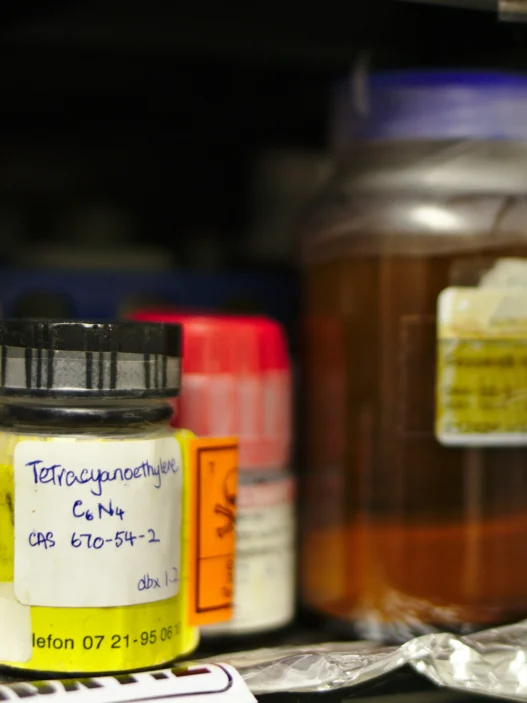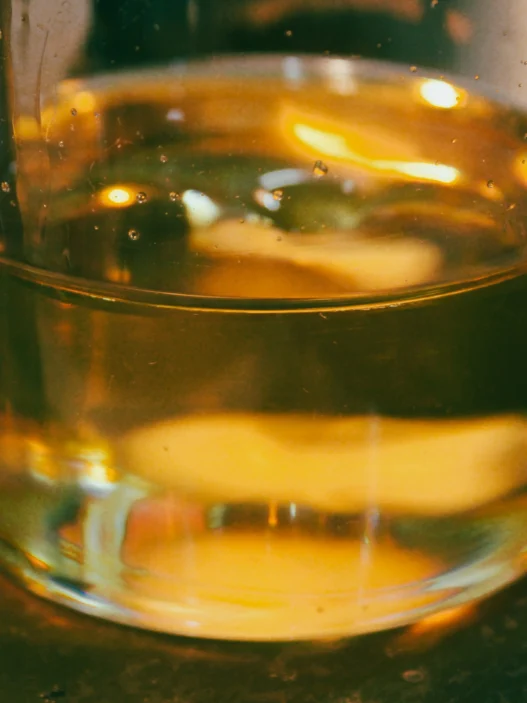Syringaldehyde is a chemical compound commonly found in plant materials, particularly in lignin, the structural component of cell walls in plants. This compound is used in various industrial processes, such as the production of flavors and fragrances, as well as in the pharmaceutical and cosmetic industries. Its relevance to everyday life lies in its contribution to the development of consumer products that enhance our sensory experiences, such as food flavors, perfumes, and skincare products. Additionally, syringaldehyde plays a role in the research and development of biodegradable materials and biofuels, highlighting its significance in sustainable technology and environmental conservation efforts.
Table of Contents:
- 💡 Commercial Applications
- ⚗️ Chemical & Physical Properties
- 🏭 Production & Procurement
- ⚠️ Safety Considerations
- 🔬 Potential Research Directions
- 🧪 Related Compounds
💡 Commercial Applications
Syringaldehyde, also known as 4-hydroxy-3,5-dimethoxybenzaldehyde, has various commercial and industrial applications. It is commonly used as a flavoring agent in the food industry due to its aromatic properties. Syringaldehyde is also utilized in the production of perfumes and fragrances for its sweet and woody scent.
In addition to its commercial and industrial uses, syringaldehyde has potential applications in the pharmaceutical industry. It is being studied for its antioxidant properties, which may have therapeutic benefits in the treatment of various diseases. Syringaldehyde is also being explored for its antimicrobial properties, which could be utilized in the development of new drugs and medications.
Overall, syringaldehyde’s diverse properties make it a valuable compound in various industries, from food and fragrance to pharmaceuticals. Further research and development of this compound may lead to new commercial applications and potential medical breakthroughs in the future.
⚗️ Chemical & Physical Properties
Syringaldehyde is a phenolic compound with a pale yellow color and a strong sweet, creamy odor. It is commonly found in the bark of certain tree species and is used in various industries for its unique properties.
With a molar mass of 182.2 g/mol and a density of 1.21 g/cm3, syringaldehyde falls in line with common food items such as sugar (180.2 g/mol, 1.59 g/cm3) and salt (58.44 g/mol, 2.16 g/cm3) in terms of molar mass and density.
Syringaldehyde has a melting point of 81-84°C and a boiling point of 213-215°C. This puts it in a similar range to common food items like butter (melting point: 32-35°C, boiling point: 150-180°C) and sugar (melting point: 186°C, decomposition point: 186-237°C).
Syringaldehyde is sparingly soluble in water and has a low viscosity. Compared to common food items like salt (soluble) and honey (viscous), syringaldehyde exhibits different solubility and viscosity properties that make it unique in its application.
🏭 Production & Procurement
Syringaldehyde, a compound commonly found in lignin and agricultural waste, is primarily produced through chemical synthesis processes. This involves the catalytic oxidation of vanillin, a precursor derived from natural sources such as the bark of certain trees. The chemical reaction results in the conversion of vanillin to syringaldehyde, a useful compound in various industries.
As a key ingredient in the production of various products such as fragrances, flavors, and pharmaceuticals, syringaldehyde can be procured through specialized chemical suppliers. These suppliers typically source the compound from manufacturers who produce it in bulk quantities through industrial processes. Once procured, syringaldehyde can be transported in sealed containers to ensure its stability and to prevent contamination during transit.
In addition to chemical suppliers, research institutions and academic laboratories may also procure syringaldehyde for experimental purposes. These organizations often obtain the compound in smaller quantities from specialized suppliers or directly from manufacturers. The transportation of syringaldehyde in these cases is typically handled with caution to ensure the compound’s integrity and stability throughout the procurement process.
⚠️ Safety Considerations
Safety considerations for Syringaldehyde should be taken seriously due to its potential hazards. The substance is flammable and may cause irritation to the skin, eyes, and respiratory system upon contact or inhalation. It is important to handle Syringaldehyde in a well-ventilated area, wear appropriate personal protective equipment such as gloves and goggles, and refrain from smoking or open flames near the chemical.
Hazard statements for Syringaldehyde include “Causes skin irritation,” “Causes serious eye irritation,” and “May cause respiratory irritation.” It is also classified as a flammable liquid and vapor, posing potential fire and explosion hazards. Additionally, prolonged or repeated exposure to Syringaldehyde may cause damage to organs through prolonged or repeated exposure.
Precautionary statements for Syringaldehyde include “Keep away from heat/sparks/open flames/hot surfaces – No smoking,” “Wear protective gloves/protective clothing/eye protection/face protection,” and “Wash hands thoroughly after handling.” It is advisable to store Syringaldehyde in a cool, well-ventilated area away from incompatible materials such as oxidizing agents. In case of accidental exposure or ingestion, seek medical advice immediately and provide the Safety Data Sheet to healthcare professionals.
🔬 Potential Research Directions
Potential research directions for Syringaldehyde include exploring its potential as a bioactive compound in the field of pharmaceuticals and nutraceuticals. Studies could focus on its antioxidant properties and its ability to inhibit enzymes related to inflammation and oxidative stress, which could lead to the development of new therapeutic agents.
Furthermore, investigations could delve into the potential antimicrobial properties of Syringaldehyde and its effectiveness against various pathogens. Research may also explore its role in food preservation and its potential as a natural alternative to synthetic additives in the food industry.
Another avenue for research could involve studying the potential neuroprotective effects of Syringaldehyde and its impact on neurodegenerative diseases. Additionally, research could focus on its anti-cancer properties and its ability to inhibit the growth of cancer cells, paving the way for the development of novel anti-cancer therapies.
🧪 Related Compounds
One similar compound to Syringaldehyde based upon molecular structure is Vanillin. Vanillin is an organic compound with the molecular formula C8H8O3. It consists of a benzene ring with a hydroxyl group and aldehyde group attached to it, similar to the structure of Syringaldehyde.
Another compound with a similar structure to Syringaldehyde is Coniferyl aldehyde. Coniferyl aldehyde is also known as sinapaldehyde and has the molecular formula C10H12O3. It contains a phenylpropanoid structure with an aldehyde group attached, making it structurally analogous to Syringaldehyde.
Coumarin is a compound that shares a resemblance to Syringaldehyde in terms of molecular structure. Coumarin has the molecular formula C9H6O2 and consists of a benzene ring fused to a lactone ring. While it does not possess an aldehyde group like Syringaldehyde, its aromatic structure bears some likeness to that of Syringaldehyde.




